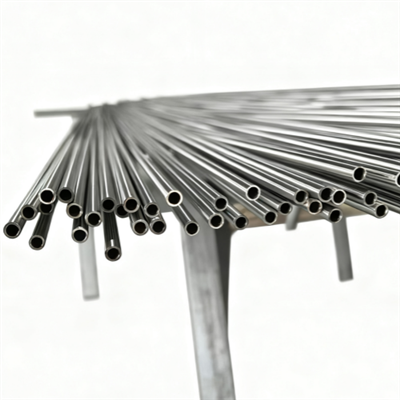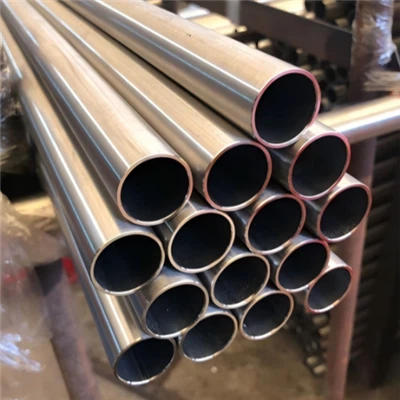As a reputable supplier of 317L stainless steel pipes, I often encounter inquiries about the tempering process for this particular material. In this blog post, I'll delve into the intricacies of the tempering process for 317L stainless steel pipes, explaining its importance, procedures, and benefits.
Understanding 317L Stainless Steel Pipe
Before we explore the tempering process, let's first understand what 317L stainless steel pipe is. 317L is a low-carbon version of 317 stainless steel, which is a molybdenum-bearing austenitic stainless steel. The "L" in 317L stands for "low carbon," which helps prevent carbide precipitation during welding and high-temperature applications. This grade offers excellent corrosion resistance, especially in environments containing chlorides, making it suitable for a wide range of applications, including chemical processing, marine, and architectural industries.
Why Tempering is Necessary
Tempering is a heat treatment process that is often performed after hardening or welding to improve the ductility, toughness, and relieve internal stresses in the material. In the case of 317L stainless steel pipes, tempering is crucial for several reasons:
- Stress Relief: During the manufacturing process, such as cold working or welding, internal stresses can develop in the stainless steel pipes. These stresses can lead to cracking, distortion, or reduced mechanical properties. Tempering helps to relieve these internal stresses, making the pipes more stable and less prone to failure.
- Improved Ductility and Toughness: Hardening processes can make the material brittle. Tempering helps to reduce the brittleness and improve the ductility and toughness of the 317L stainless steel pipes. This makes the pipes more resistant to impact and fatigue, which is essential for applications where the pipes may be subjected to dynamic loads.
- Enhanced Corrosion Resistance: Proper tempering can also improve the corrosion resistance of 317L stainless steel pipes. By relieving internal stresses and optimizing the microstructure, the pipes are better able to withstand corrosive environments, such as those containing acids, alkalis, or chlorides.
The Tempering Process for 317L Stainless Steel Pipe
The tempering process for 317L stainless steel pipes typically involves the following steps:
- Heating: The first step in the tempering process is to heat the 317L stainless steel pipes to a specific temperature. The tempering temperature depends on the desired properties of the pipes and the specific application. Generally, the tempering temperature for 317L stainless steel pipes ranges from 550°C to 850°C (1022°F to 1562°F).
- Soaking: Once the pipes reach the desired tempering temperature, they are held at that temperature for a specific period of time, known as the soaking time. The soaking time allows the internal stresses to be relieved and the microstructure to be transformed. The soaking time can vary depending on the thickness and size of the pipes, but it typically ranges from 30 minutes to several hours.
- Cooling: After the soaking time is complete, the pipes are cooled to room temperature. The cooling rate can also affect the properties of the pipes. In some cases, a controlled cooling rate may be used to achieve the desired properties. For example, slow cooling can help to improve the ductility and toughness of the pipes, while rapid cooling can result in a harder and more brittle material.
Factors Affecting the Tempering Process
Several factors can affect the tempering process for 317L stainless steel pipes, including:
- Tempering Temperature: The tempering temperature has a significant impact on the properties of the pipes. Higher tempering temperatures generally result in lower hardness and higher ductility, while lower tempering temperatures can result in higher hardness and lower ductility.
- Soaking Time: The soaking time also affects the properties of the pipes. Longer soaking times allow for more complete stress relief and microstructure transformation, resulting in improved properties. However, excessive soaking times can also lead to grain growth and a decrease in mechanical properties.
- Cooling Rate: The cooling rate can affect the hardness, ductility, and toughness of the pipes. Rapid cooling can result in a harder and more brittle material, while slow cooling can help to improve the ductility and toughness.
- Chemical Composition: The chemical composition of the 317L stainless steel pipes can also affect the tempering process. For example, the presence of certain alloying elements, such as molybdenum and nickel, can affect the hardenability and tempering response of the material.
Benefits of Proper Tempering
Proper tempering of 317L stainless steel pipes offers several benefits, including:
- Improved Mechanical Properties: Tempering helps to improve the ductility, toughness, and strength of the pipes, making them more suitable for a wide range of applications.
- Enhanced Corrosion Resistance: By relieving internal stresses and optimizing the microstructure, tempering can improve the corrosion resistance of the pipes, especially in harsh environments.
- Reduced Risk of Cracking and Distortion: Tempering helps to relieve internal stresses, reducing the risk of cracking and distortion during manufacturing and service.
- Increased Service Life: The improved mechanical properties and corrosion resistance of tempered 317L stainless steel pipes can result in a longer service life, reducing maintenance costs and downtime.
Applications of 317L Stainless Steel Pipes
317L stainless steel pipes are widely used in various industries due to their excellent corrosion resistance, mechanical properties, and weldability. Some common applications of 317L stainless steel pipes include:
- Chemical Processing: 317L stainless steel pipes are commonly used in chemical processing plants for transporting corrosive chemicals, such as acids, alkalis, and solvents.
- Marine Industry: The excellent corrosion resistance of 317L stainless steel pipes makes them suitable for use in marine environments, such as offshore platforms, ships, and desalination plants.
- Architectural Applications: 317L stainless steel pipes are also used in architectural applications, such as building facades, handrails, and decorative elements, due to their aesthetic appeal and durability.
- Food and Beverage Industry: The hygienic properties of 317L stainless steel pipes make them ideal for use in the food and beverage industry, where they are used for transporting and storing food and beverages.
Our Offerings
As a leading supplier of Thin-walled Stainless Steel Pipe, SS316Ti UNS S31635, and Decorative Pipe, we offer high-quality 317L stainless steel pipes that are precisely tempered to meet the specific requirements of our customers. Our pipes are available in a variety of sizes, wall thicknesses, and finishes, and we can also provide custom fabrication services to meet your unique needs.


If you are in the market for 317L stainless steel pipes or have any questions about the tempering process, please feel free to contact us. Our team of experts is ready to assist you with your inquiries and help you find the right solution for your application.
Conclusion
The tempering process is a critical step in the manufacturing of 317L stainless steel pipes. It helps to improve the mechanical properties, corrosion resistance, and reduce the risk of cracking and distortion. By understanding the tempering process and its importance, you can ensure that you are getting high-quality 317L stainless steel pipes that meet your specific requirements. If you have any further questions or need more information, please don't hesitate to contact us. We look forward to serving you and meeting your stainless steel pipe needs.
References
- ASM Handbook, Volume 4: Heat Treating
- Stainless Steel Handbook, 4th Edition
- Welding Metallurgy and Weldability of Stainless Steels






